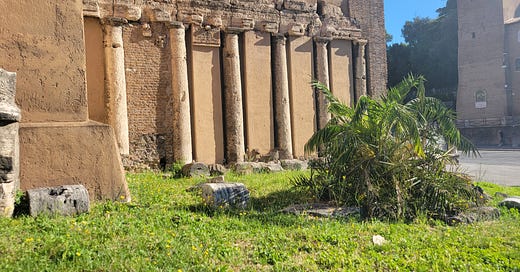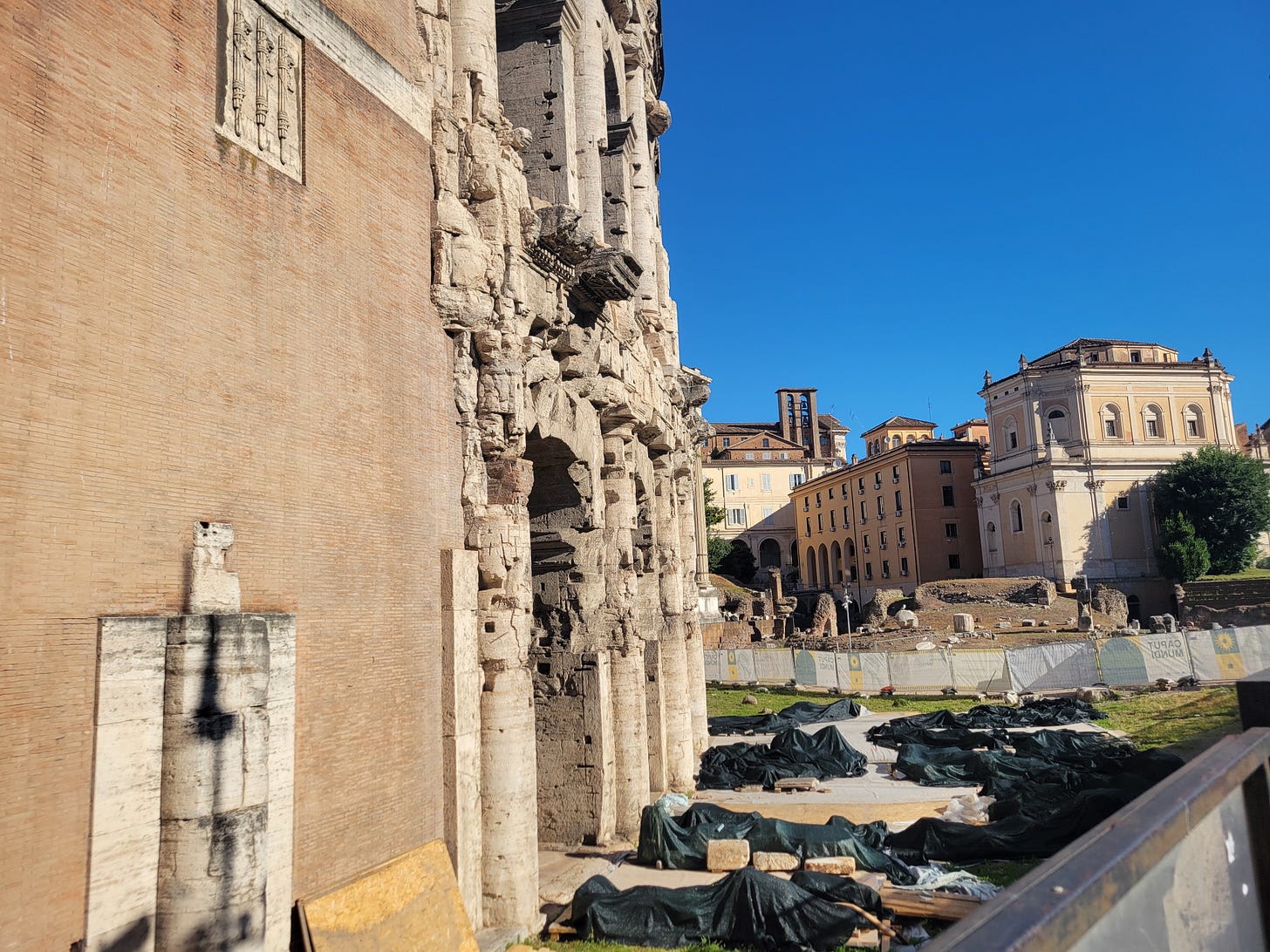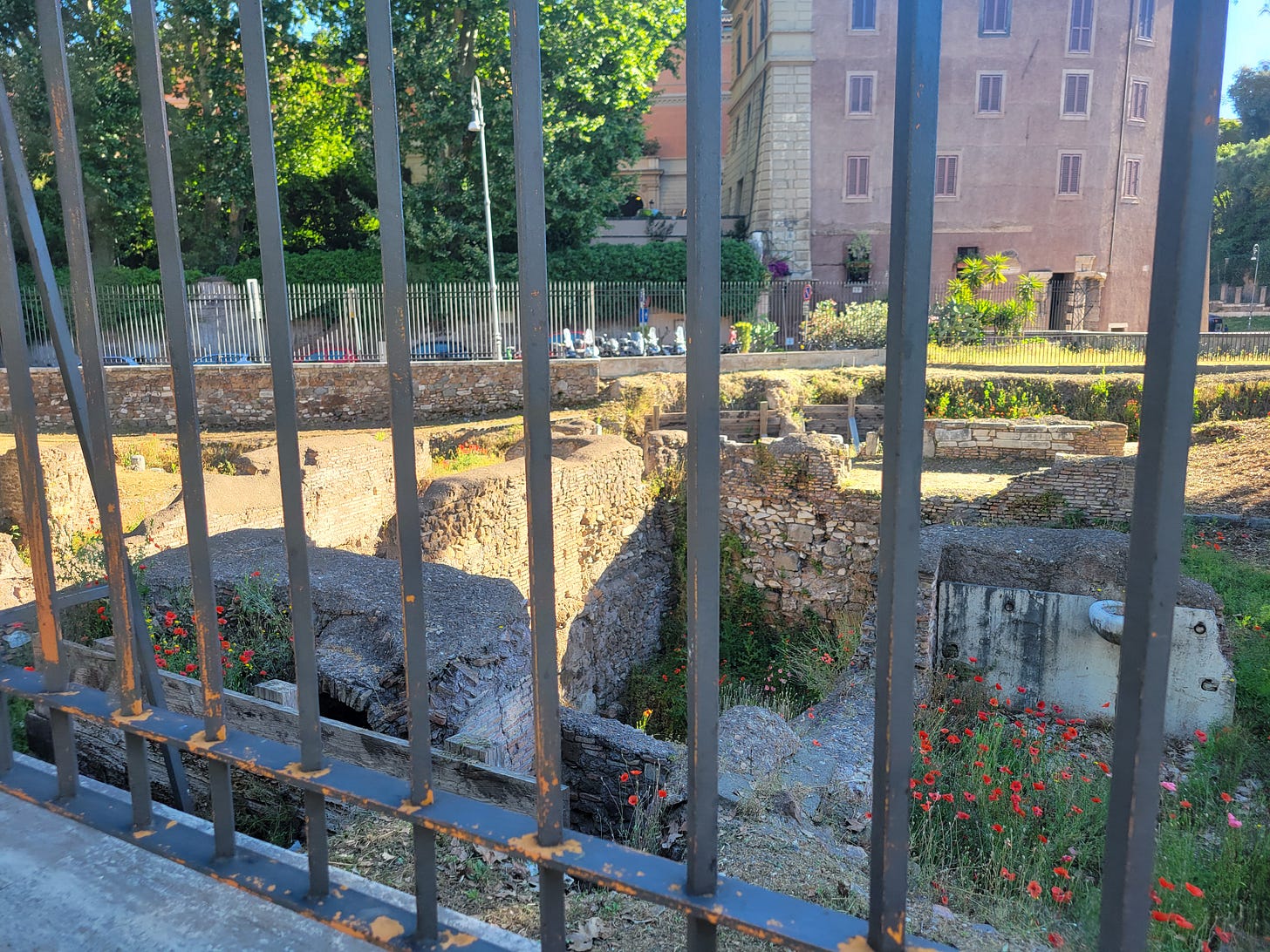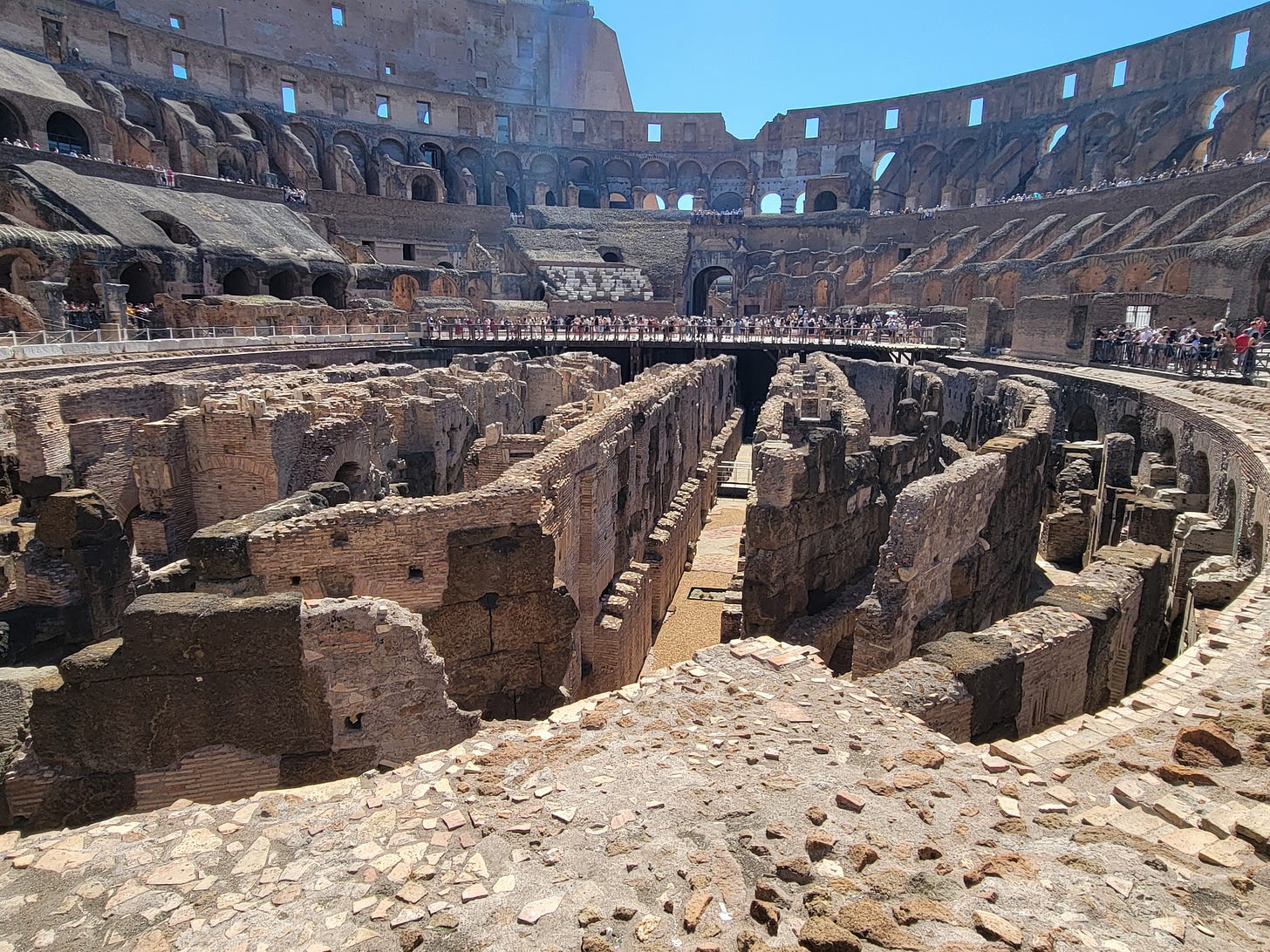Living Among Ruins: Becoming Living Stones on Broken Foundations
How the Crumbled Places in Our Lives Become Sacred Ground for Transformation
The Ruins We Live With
I’ve been walking through Rome this week, attending a terrific conference (more on that soon). But what has really struck me are the ruins.
Everywhere I turn, ancient stone structures emerge from between modern buildings; some world-famous, like the Colosseum, others nameless and nearly forgotten. Some ruins have been incorporated into the foundations of contemporary buildings. Others simply interrupt the city’s flow, standing as reminders of what once was. In a strange way, they seem both ignored and unavoidable.
(Ancient columns incorporated into a standing building.)
And I can’t help but see the analogy.
Each of us carries ruins from our past; crumbling places in our story that remain embedded in the streets of our lives. Sometimes we try to build over them, integrating them into daily routines without realizing how unstable the foundation has become.
Other times, we let the ruins pop up as they please, giving them names that eventually become excuses. And often, we just step over them, covering the debris with tarps, hoping to hide the excavation site from others and maybe even ourselves.
(An ongoing excavation.)
But what if these ruins are not meant to be ignored or hidden?
What if the Spirit of God is inviting us to see them, name them, and allow them to be rebuilt?
(Ruins that have been there so long, behind a fence, there are flowers blooming.)
Naming the Ancient Places
In the spiritual life, unhealed wounds rarely disappear on their own. Like unnamed ruins, they disrupt the soul’s landscape until they are acknowledged and integrated. The process begins with naming.
Psychologically, naming is a form of integration—a core concept in Interpersonal Neurobiology (IPNB). Integration allows the brain to link what’s been scattered: experiences, emotions, and relationships. Without it, we remain fragmented, reacting to life through unconscious patterns we don’t fully understand.
The Neuro-Based Enneagram offers a helpful spiritual lens here. Each vector reflects a story we’ve internalized—usually from childhood—that once helped us survive but now may hinder our freedom. These stories form part of our “default narratives.” When we aren’t aware of them, they operate like scaffolding around our ruins, holding together something that was never meant to stand forever.
Naming these stories is not an act of shame; it is an act of grace. In Scripture, naming often marks the beginning of transformation: Jacob becomes Israel, Saul becomes Paul. The act of naming, when done in the presence of God, opens the door for new identity and restored wholeness.
This is also deeply relational. Neuroscience tells us that we need attuned presence—the empathetic gaze of another—to safely name what we fear. That’s why confession, spiritual direction, or even trusted friendship becomes sacred ground for healing. It's not enough to know the ruins exist; we must name them in the presence of someone who sees us with compassion and loves us without condition.
And most importantly, we name them in the presence of God.
God asks Adam, “Where are you?” Not because He doesn’t know, but because Adam needs to speak. Jesus asks the demon-possessed man his name, not to shame him, but to restore him. The Holy Spirit doesn’t demolish by force. She asks us to look, to speak, and to trust that transformation begins with a name.
Rebuilding with God
Rome’s ruins are not just remnants; they’re part of the city’s structure. Some have been carefully restored, others adapted into the foundations of churches, libraries, and even restaurants. That image gives us hope. In God's economy, nothing is wasted. What’s crumbling can become the cornerstone of something redemptive.
Scripture says we are “living stones… being built into a spiritual house” (1 Peter 2:5). But that rebuilding process doesn’t happen by willpower alone. Neuroscience reminds us that transformation requires attachment. Who we love—and who loves us—shapes who we become.
This is why joyful, secure relationships matter so much in the journey of spiritual formation. The right brain (our relational, emotional, identity-forming center) is where character is formed. We cannot simply think our way into Christlikeness; we are shaped by who we attach to, especially in times of distress.
Jesus invites us into a hesed relationship: faithful, enduring, never-letting-go love. It’s that kind of attachment that allows our deepest wounds to be re-formed into places of grace. The Spirit does not just heal the ruins; She inhabits them. What was once the site of shame can become a sanctuary of compassion.
In Christian community, we are called not only to be restored but to become restorers. When we walk with others through their ruins—offering presence instead of prescriptions, compassion instead of critique—we embody the ministry of Christ, who walks our broken streets and says, “Behold, I am making all things new.” (Revelation 21:5)
Living Among the Ruins
The ruins of Rome endure not because they are perfect, but because they are real. They carry the weight of story—beauty and brutality, power and decay. And still, they stand.
(The Colosseum. I have mixed feelings about it. It reminds me of both Roman ingenuity and Roman brutality.)
So do we.
Each of us walks among the remnants of stories that shaped us. But we are not abandoned sites. In Christ, we are sacred ground; under reconstruction, not condemnation. The Holy Spirit is the master restorer, not removing the past but redeeming it.
You may not yet know the names of your ruins. Or perhaps you do, but you’re not sure how to move forward. That’s okay. Naming is just the beginning. Rebuilding is slow, tender, Spirit-led work.
But you do not have to do it alone.
As a spiritual director, retreat leader, and coach, I walk with people like you, those ready to notice, name, and begin again. If your soul feels like a city under renovation, know this: God is not afraid of ruins. He rebuilds lives with grace and grit. Together, we can uncover what needs attention and listen for the voice that says, "You are not forgotten. You are being made new."
Let’s walk your streets together.
Questions for Reflection
What ruins from your past do you find yourself stepping over, covering up, or trying to ignore?
Is there a “default narrative” you’ve been living from, something you believe about yourself that may no longer serve your life in Christ?
When was the last time you allowed yourself to name a wounded place in the presence of God or a trusted other?
How might God be inviting you to see your broken places not as obstacles, but as places where His grace wants to dwell?
Who in your life walks with you among your ruins—and who might need you to do that for them?








